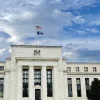
Mortgage Rates Today, July 3, 2025: It's Jobs Report Day! And One Big Beautiful Bill Looks Set to Pass
The jobs report is typically the most important of all monthly economic reports. What might today's mean for mortgage rates?

The jobs report is typically the most important of all monthly economic reports. What might today's mean for mortgage rates?

A mortgage rate is how much you pay in interest on a home loan per year. But what makes them go up or down?

First-time home buyers are biding their time, put off by high mortgage rates. But is that a mistake they'll later regret?

Two expert forecasts this week provide hope that mortgage rates could fall later this year and through 2026.

Trump told rally-goers in Arizona that mortgage rates would fall to 2% during his presidency. Is that anywhere near possible?

Trump will be the president for the next four years. What that could mean for mortgage rates.

Mortgage rates have been on a roller coaster of late. What might 2025 bring for rates?

The Fed issued an anticipated rate cut, but it was bigger than many expected. How mortgage rates are reacting.

Many homeowners who purchased since September 2022 might save money with a refinance, thanks to falling mortgage rates.

Falling mortgage rates have equated to an estimated $300-per-month drop in the mortgage payment on a $350,000 home.

Mortgage rates have steadied since last week's roller coaster. But another important report is about to be published that could again take rates for a ride.

Two highly significant events this week have the potential to set mortgage rates moving up or down for months to come.

A mortgage rate lock captures a rate on a specific day. But when should you lock when buying or refinancing a house?

The Fed could look to cut rates in September, but only if inflation numbers cooperation, some of which come out Friday.